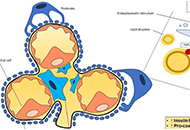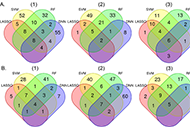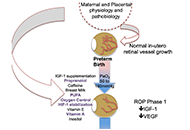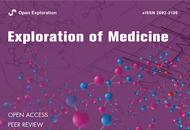PNPLA3 gene and kidney disease
Chronic kidney disease (CKD) is a disease regularly seen in clinical practice. At present, CKD is described as a change of kidney structure and/or function and it is classified in relation to cause, values of glomerular filtration
[...] Read more.
Chronic kidney disease (CKD) is a disease regularly seen in clinical practice. At present, CKD is described as a change of kidney structure and/or function and it is classified in relation to cause, values of glomerular filtration rate and albuminuria category. Seeing that CKD is closely linked to the development of end-stage renal disease and other comorbidities, the determination of additional independent predictors for CKD is clinically necessary. At present, there is evidence associating non-alcoholic fatty liver disease (NAFLD) with CKD, thereby suggesting that NAFLD patients may require intensive surveillance to reduce their risk of CKD. In 2008, genome-wide association studies documented an association between the variant rs738409 (C > G p.I148M) in the patatin-like phospholipase domain containing 3 (PNPLA3) gene (mainly implicated in the lipid regulation) and the entire spectrum of NAFLD (i.e., liver steatosis, non-alcoholic steatohepatitis, fibrosis, and hepatocellular carcinoma). In the last years, accumulating epidemiological evidence suggests the existence of a relationship between PNPLA3 rs738409 and risk of CKD, indicating that rs738409 may also contribute to the kidney injury. This is of particular scientific interest, as such association may explain, at least in part, the epidemiological association between liver and kidney disease. In this narrative review, we will discuss the accumulating evidence regarding the association between PNPLA3 rs738409 and risk of CKD, the putative biological mechanisms underpinning such relationship, and the possible future perspective.
Alessandro Mantovani, Chiara Zusi
Chronic kidney disease (CKD) is a disease regularly seen in clinical practice. At present, CKD is described as a change of kidney structure and/or function and it is classified in relation to cause, values of glomerular filtration rate and albuminuria category. Seeing that CKD is closely linked to the development of end-stage renal disease and other comorbidities, the determination of additional independent predictors for CKD is clinically necessary. At present, there is evidence associating non-alcoholic fatty liver disease (NAFLD) with CKD, thereby suggesting that NAFLD patients may require intensive surveillance to reduce their risk of CKD. In 2008, genome-wide association studies documented an association between the variant rs738409 (C > G p.I148M) in the patatin-like phospholipase domain containing 3 (PNPLA3) gene (mainly implicated in the lipid regulation) and the entire spectrum of NAFLD (i.e., liver steatosis, non-alcoholic steatohepatitis, fibrosis, and hepatocellular carcinoma). In the last years, accumulating epidemiological evidence suggests the existence of a relationship between PNPLA3 rs738409 and risk of CKD, indicating that rs738409 may also contribute to the kidney injury. This is of particular scientific interest, as such association may explain, at least in part, the epidemiological association between liver and kidney disease. In this narrative review, we will discuss the accumulating evidence regarding the association between PNPLA3 rs738409 and risk of CKD, the putative biological mechanisms underpinning such relationship, and the possible future perspective.
 PNPLA3 gene and kidney diseaseOpen AccessReviewChronic kidney disease (CKD) is a disease regularly seen in clinical practice. At present, CKD is described as a change of kidney structure and/or function and it is classified in relation to cause, values of glomerular filtration [...] Read more.Alessandro Mantovani, Chiara ZusiPublished: February 29, 2020 Explor Med. 2020;1:42–50
PNPLA3 gene and kidney diseaseOpen AccessReviewChronic kidney disease (CKD) is a disease regularly seen in clinical practice. At present, CKD is described as a change of kidney structure and/or function and it is classified in relation to cause, values of glomerular filtration [...] Read more.Alessandro Mantovani, Chiara ZusiPublished: February 29, 2020 Explor Med. 2020;1:42–50 Identifying factors associated with opioid cessation in a biracial sample using machine learningOpen AccessOriginal ArticleAim: Racial disparities in opioid use disorder (OUD) management exist, however, and there is limited research on factors that influence opioid cessation in different population groups. Methods: We employed multiple machine [...] Read more.Jiayi W. Cox ... Lindsay A. FarrerPublished: February 29, 2020 Explor Med. 2020;1:27–41
Identifying factors associated with opioid cessation in a biracial sample using machine learningOpen AccessOriginal ArticleAim: Racial disparities in opioid use disorder (OUD) management exist, however, and there is limited research on factors that influence opioid cessation in different population groups. Methods: We employed multiple machine [...] Read more.Jiayi W. Cox ... Lindsay A. FarrerPublished: February 29, 2020 Explor Med. 2020;1:27–41 Current evidence and outcomes for retinopathy of prematurity prevention: insight into novel maternal and placental contributionsOpen AccessReviewRetinopathy of prematurity (ROP) is a blinding morbidity of preterm infants, which represents a significant clinical problem, accounting for up to 40% of all childhood blindness. ROP displays a range of severity, though even mild [...] Read more.Lara Carroll, Leah A. OwenPublished: February 29, 2020 Explor Med. 2020;1:4–26
Current evidence and outcomes for retinopathy of prematurity prevention: insight into novel maternal and placental contributionsOpen AccessReviewRetinopathy of prematurity (ROP) is a blinding morbidity of preterm infants, which represents a significant clinical problem, accounting for up to 40% of all childhood blindness. ROP displays a range of severity, though even mild [...] Read more.Lara Carroll, Leah A. OwenPublished: February 29, 2020 Explor Med. 2020;1:4–26 Welcome message from the Editor-in-ChiefOpen AccessEditorialLindsay A. FarrerPublished: February 29, 2020 Explor Med. 2020;1:1–3
Welcome message from the Editor-in-ChiefOpen AccessEditorialLindsay A. FarrerPublished: February 29, 2020 Explor Med. 2020;1:1–3